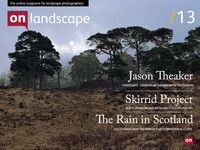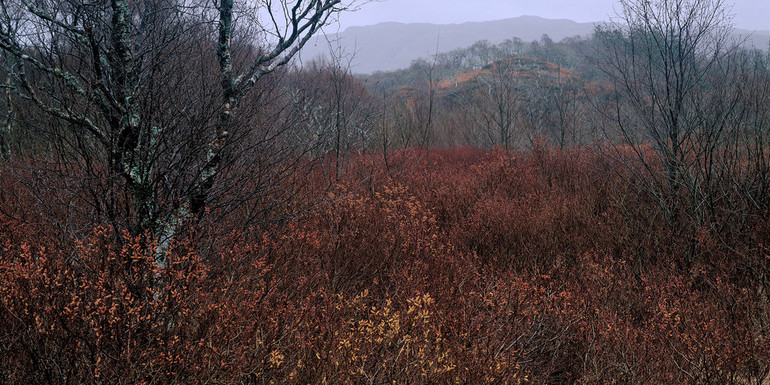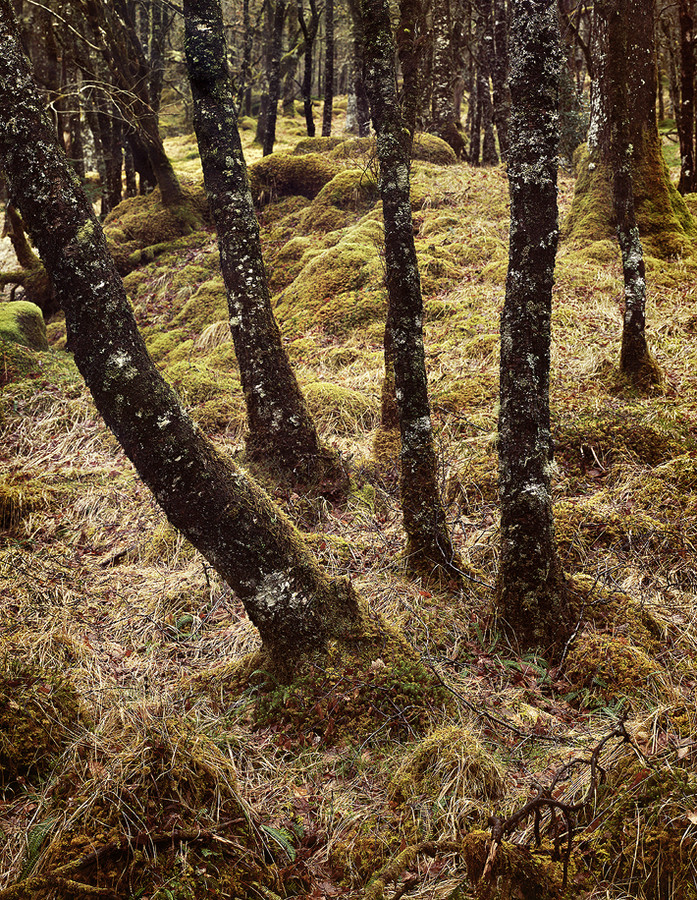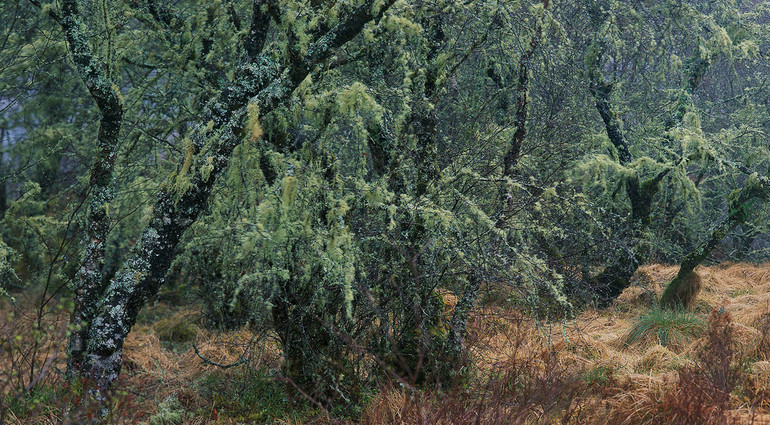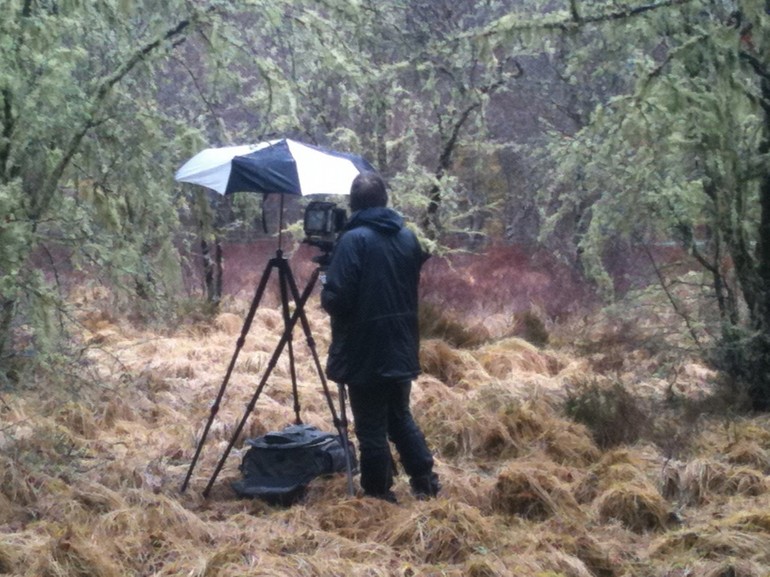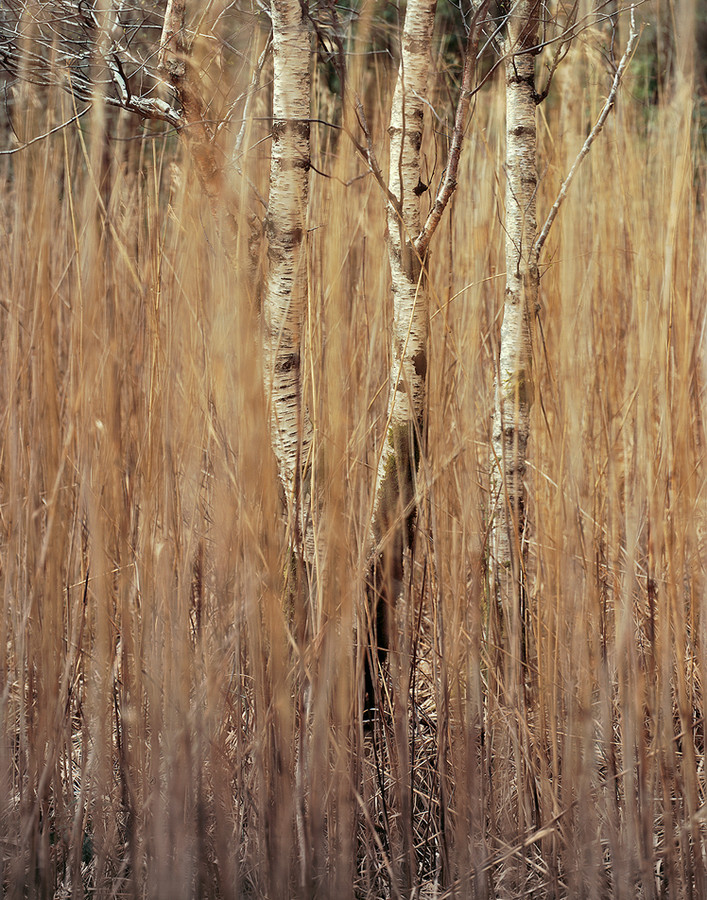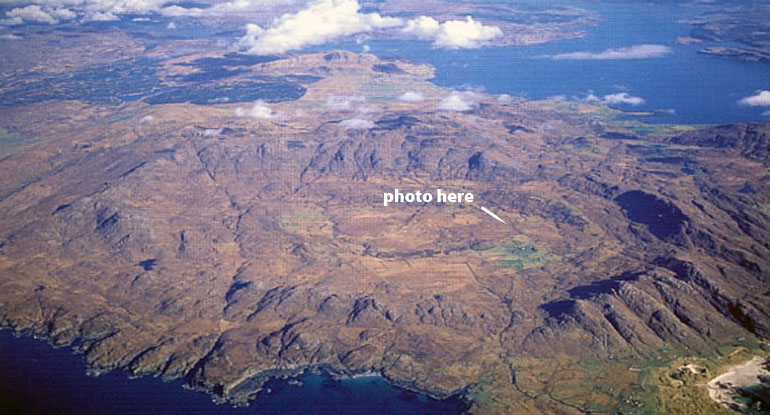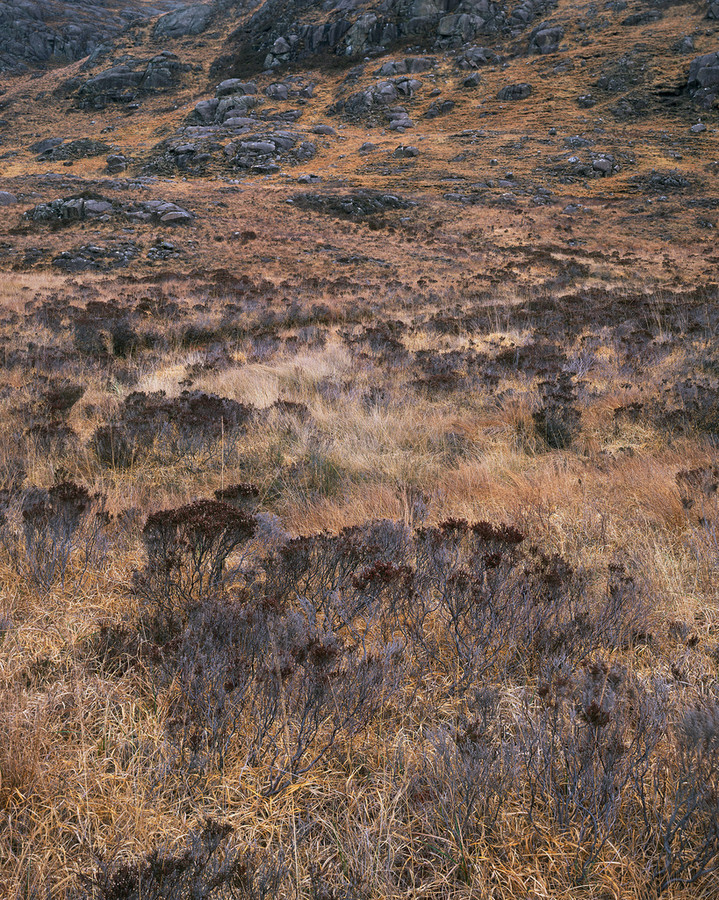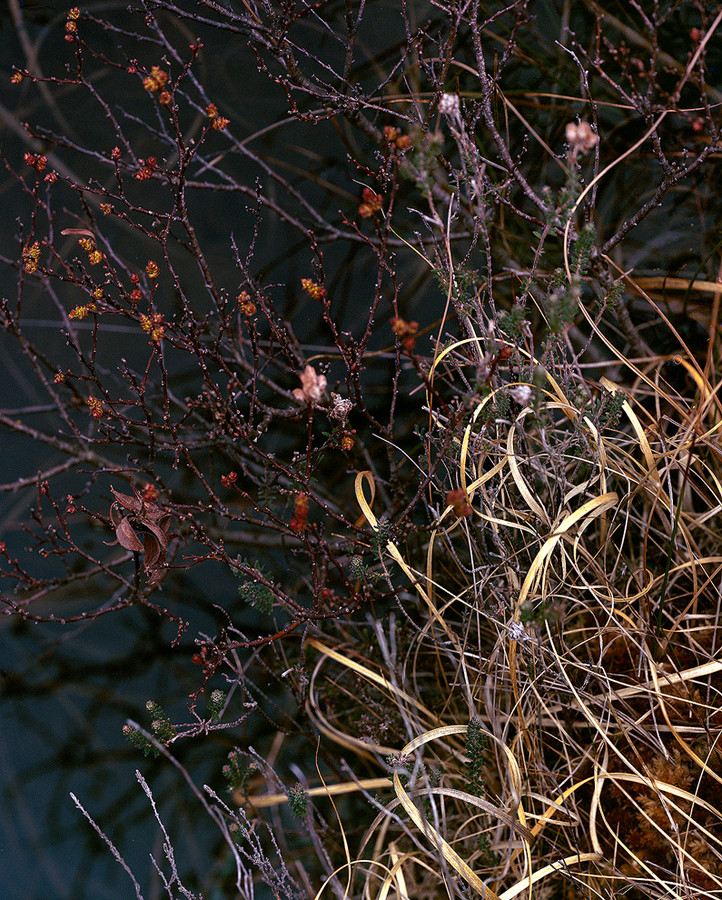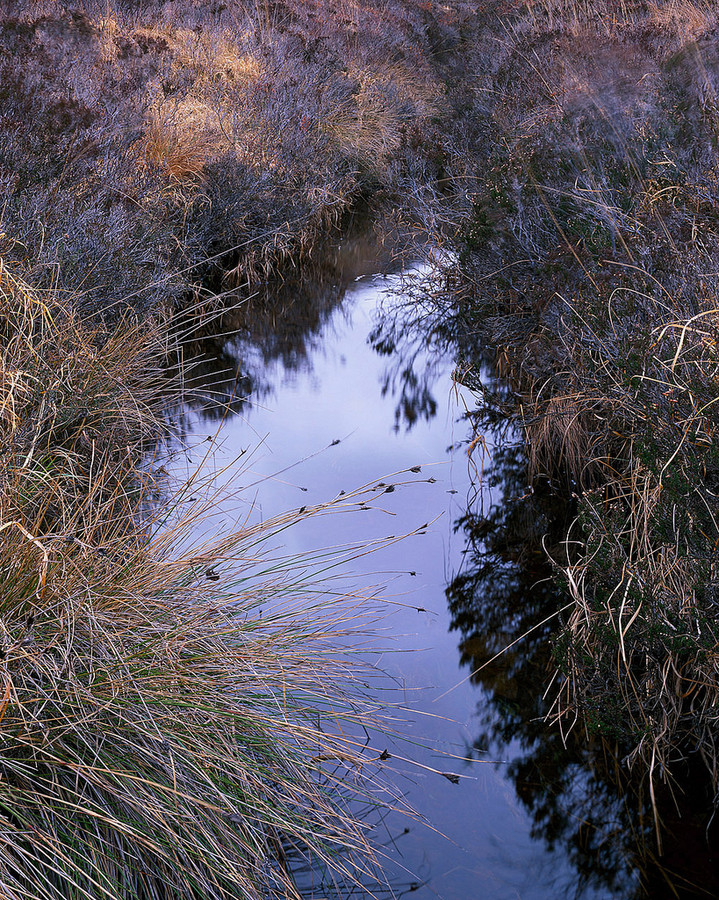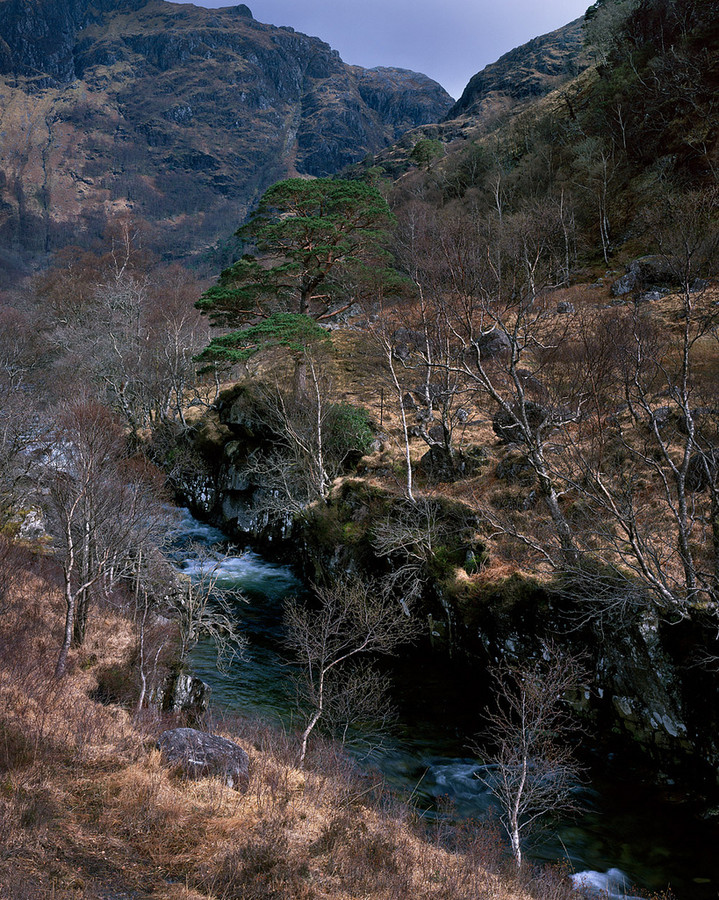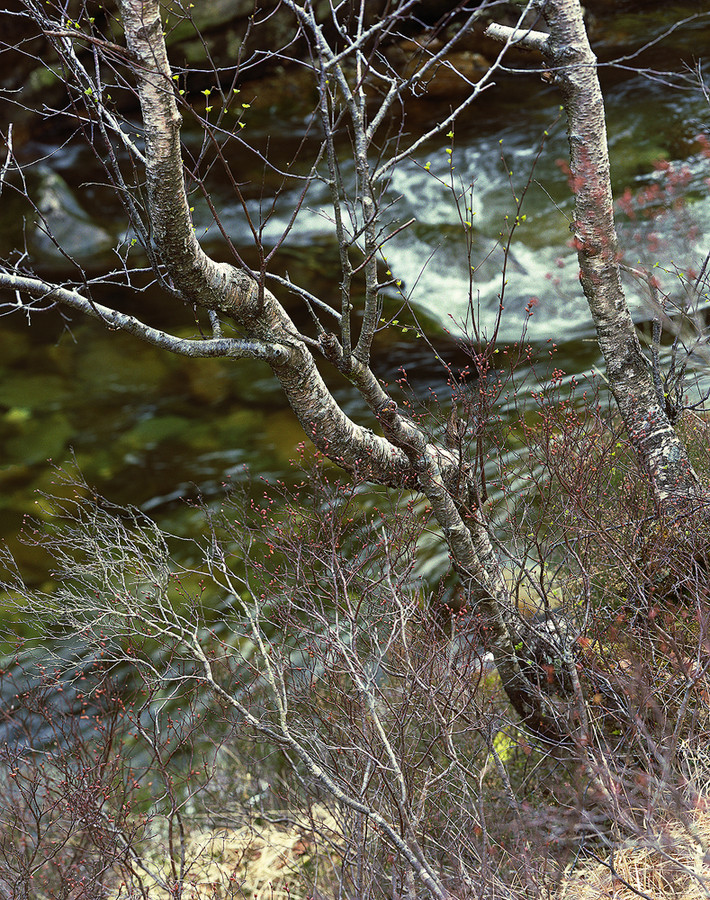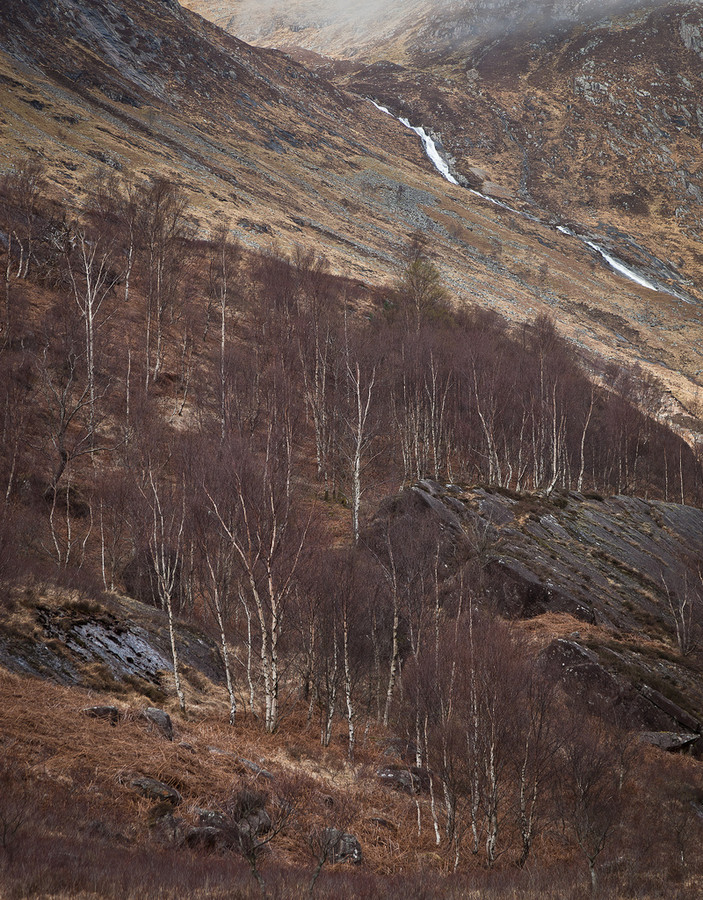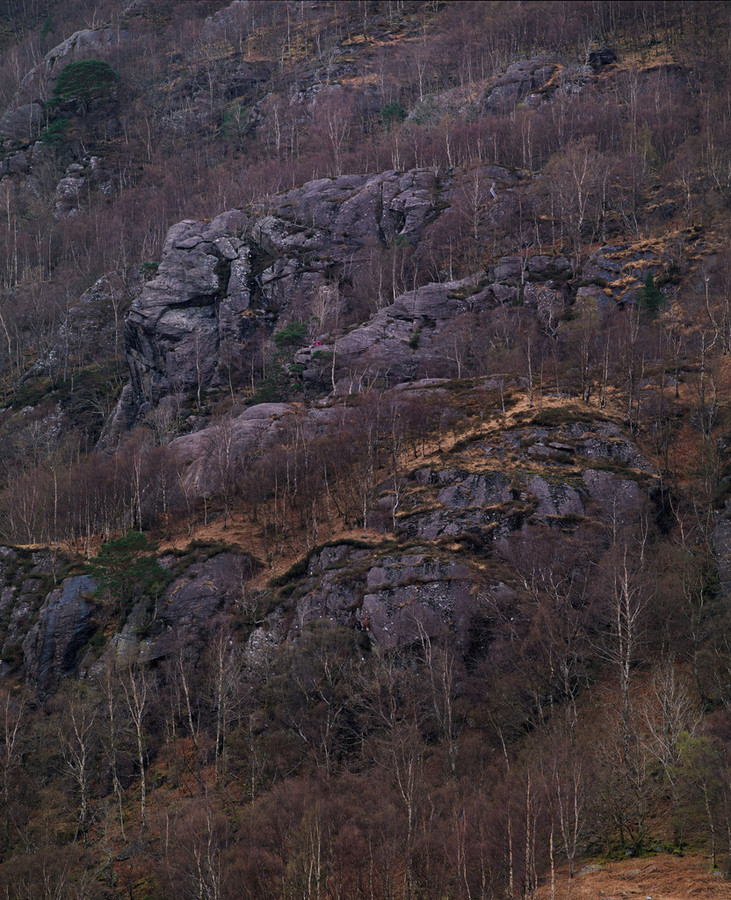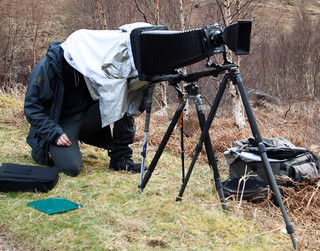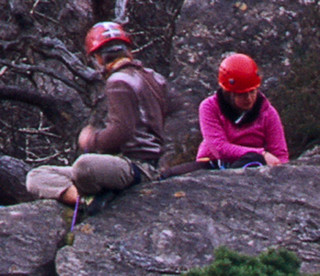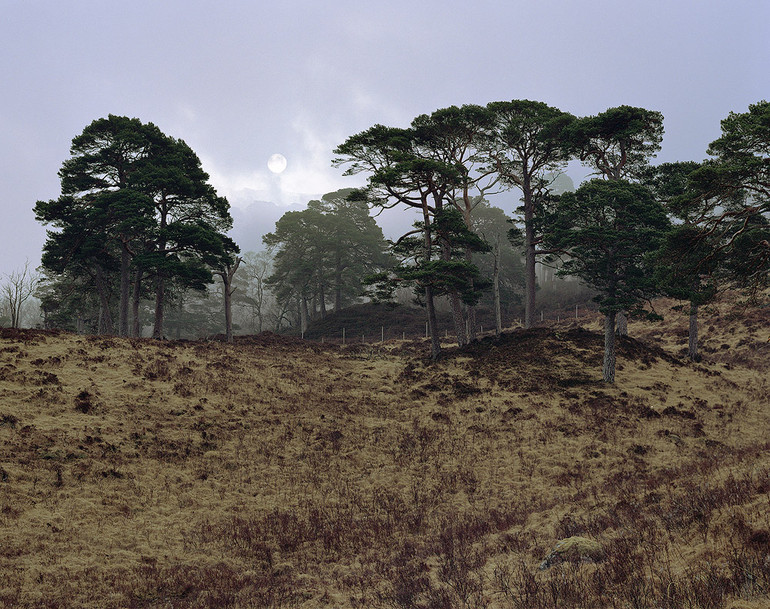(or why this issue is late!)

Tim Parkin
Amateur Photographer who plays with big cameras and film when in between digital photographs.
First of all please accept your editors humble apologies for the tardiness of the current issue. All the plans were put in place to ensure a week in the wilderness would generate content rather than delay it, but like the best military leaders often say “no plan survives direct contact with the enemy”. In this case the enemy was incessant rain, flat leisure batteries and an underestimation of how tired a photographer gets after a day out taking photographs.
Backing up a little bit to give you some context, last year myself and Dav Thomas planned a campervan adventure to Scotland, hopefully covering the stretch of road from Fort William to Mallaig - a choice made when driving past it all whilst returning from our adventure to the Isle of Eigg in 2009.
Since then the magazine has started and so our initial adventure with just photography in mind and two campervans became a shortened adventure with one campervan (Dav’s had only just had a replacement gearbox fitted and wasn’t properly tested) and a bunch of audio/visual gear. The plan being to do an interview and take some video content of us out and about. I won’t labout the point but in the end we only had three and a half useful days of photography and two of them had heavy rain and by the time the last day came we ended up just wanting to get some results - very slack of your editor (me) but I will make up for it with content over the coming weeks.
Anyway - back to the trip. Setting off on the Sunday afternoon, we made it to the Clachaig Inn by Sunday evening where we rested overnight and then set off to Mallaig (after stocking up on essentials in Morrisons in Fort William). The bad weather had caused a landslide on the Mallaig road however and so we were sent on a detour down via Ardgour and Sunart.
One of the joys of having an unplanned vacation is being able to adapt to circumstances and so we headed around the headland and just drove until something looked interesting and, on the banks of Loch Sunart we found a small layby near Ardery and set base for the evening after a quick scout around.
The next morning we were treated to wonderful rain - not enough to stop us taking pictures but definitely enough to make us leave the digital cameras back in the van. The highlight of this first area and probably of the trip, was the way that the rain brought out the colours in everything, including the amazing bog myrtle which was just budding. The picture below shows one of my first photographs of the bank of bog myrtle near where we had parked. It’s colour could be seen all around and even on the far hills. Incredibly, as soon as the rain stopped for more than 10 or 15 minutes, that colour started to dissapear and after half an hour was back to being a subdued reddy-brown.
Although we stayed here for a whole day, we only got a couple of photographs. I think this is mostly due to that 'bedding in' period that photographers talk about. It usually takes me a good few hours to get my 'eye in' and I put this down to a process of stopping your language centres from triggering all of the time. What do I mean by this? Well, in our everyday lives we tend to see things in terms of words. kettle, mug, office, report, door, boss, notice, dole office, etc.. but where this language centre is great for limiting the amount of data we have to deal with on a day to day basis, it gets in the way of really seeing. Our first experiences in a place such as this will probably be 'tree', 'red bush', 'hill'. etc and only after a while will we detach this process and start properly seeing in terms of colour and shape.
We moved on the next day and took a quick look at Ariundle, again enhanced in colour by the rain. This looks like a wonderful location but we only had a couple of hours their as we wanted to find somewhere to stop for the night so we could relax for the rest of the days photography. Skipping quickly past a four mile detour along one of the steepest, windiest forest roads in Scotland which we found was a dead en, thanks Dav! ;-) , we were driving on for a while when suddenly we both acclaimed 'Jolly gosh those lichen covered trees look super!' (I had to switch on my Yorkshire profanity translation service for that sentence) and pulled the van up shortly after to take a look. What we'd found were possibly the heaviest lichen covered trees in Scotland (at least that we had seen).
Dav took a picture showing the lengths I went to to get a dry camera and lens...
Dav didn't have much luck during this section as the rain was slowly getting to his camera. The bellows on his Linhof Technikardan were a little tatty when he bought the camera but where they had worn down, the rain had got underneath the surface and was starting to dissolve the paper. It was only when we got to the hotel (yes we slacked off as we were dripping) that we realised quite how bad - holding the bellows up to the bedside lamp showed massive holes, never mind pin prick light leaks. This ruined a fair amount of photographs (mostly ones where the darkslide was pulled out for while whilst waiting for the wind to stop).
We stayed here for a couple of hours and only stopped because we were now so wet that we had nothing dry anywhere to wipe the lenses with and the ground glass on Dav's camera had become waterlogged completely (when you get water in between the fresnel and the cover glass, the whole thing becomes transparent and you can't see the view, never mind focus on it).
We did stop again once before giving up completely though. Another emergency stop occured whilst we passed an amazing moss covered wall and we both got out to investigate. Whilst walking to the wall we both got drawn by a small pool with two small saplings growing out of it. Despite having only 20% functional cameras, we both worked the area for a composition and the final results were two of the highlight pictures of the week. The mossy wall wasn't so bad in the end either. Dav's interpretation is on the right and mine is on the left.
- Velvia 50 Ebony 45SU Nikkor 300
- Velvia 50 (duh!) Ebony 45SU Fujinon A 240mm
- Velvia 50 Linhof Technikardan Fujinon A 240 (Dav Thomas)
At this point the rain just got silly - take a look at the following video taken as we were crossing over to Kilchoan.
We decided to stop in a hotel for the evening in order to dry everything off (and have a good meal and a shower) and we can heartily recommend the Kilchoan House Hotel which was essentially an Inn with a great lounge and bar. The proprietor was more than helpful and we had a great evening sharing stories with the locals. The next morning we headed back to an area of reeds we had seen previously and as we arrived the sun came out. Dav's shot of these is below..
After this we carried on looking around, making our way slowly over to Sanna. On the way to Sanna we stopped in the volcanic crater to take a couple of pictures. If you don't know about this crate, take a look at the following aerial photograph and geological map - you can click on the geology map to get a Google Earth KMZ too..
The area has a barren ruggedness that reminded me of some of the Arizon desertscapes and I couldn't help but create something in an homage to Jack Dykinga. Dav and I also took a couple of shots by the side of, and in my case standing in one of the brooks that flowed off the surrounding hills (which created the nice S shaped line in the foreground of the wide shot).
When we got to Sanna itself, I have to say it was a bit of a dissapointment. The main reason for this was the enormous quantity of kelp that had been deposited on the beach, ruining it's famous bright sands. However, the whole area is fairly flat and I think you'd have to spend a fair amount of time wandering around to create some good compositions. We left fairly quickly and then spent a fairly fruitless few hours visiting every part of the Ardnamurchan North West coastline. The best bit of the coastline appeared to be near the lighthouse but the Camping and Caravan club had erected unsightly fences all around their site, cutting off easy access to the area unless you wanted to take the couple of mile walk north and then back along the coast. To say we weren't impressed is an understatement..
We were then in a bit of a dilemma - 20 minutes before sunset and nowhere to camp. I made an executive decision that we start heading back toward the south and stop on Glen Nevis for a day. We turned up at the car park at 10.30pm in the rain and finally found a small area where Dav could pitch his tent. The decision was a good one however as the days photography here was incredible productive. We had broken cloud but also the tops of the surrounding hills were flowing with cloud too - filling the gaps with mist which ebbed and flowed like the tide. I've included quite a few photographs from here in the gallery at the end but a few stand out.
This shows the view along the river at the car park end of Glen Nevis (at the very dead end of the road that goes up the valley). The walk up into the hanging valley is recommended also.
The river that passes close to the car park starts it's life at the very top of Ben Nevis and because of the amount of snow still at the top, the river was fairly profuse (and because of the torrential rain the previous couple of days had seen). We spent a day wandering around the last accessible mile of the river and at one point I got 'Black Betty' out - this is probably not what you think it is... Black Betty is my 8x10 camera that was purchased from Tristan Campbell at Christmas and I took a shot over to the other side of the valley from the roadside using the 800mm lens I had purchased from ebay a couple of weeks previously (actually a 600/800/1200mm convertible lens - by replacing the back of the lens with various elements). In order to get a stable shot from an 8x10 camera, many people use various forms of extra support, usually an extra tripod. This particular shot with such a long lens needed a little more help to stop the wind wobbling things and so I ended up with my patented 'Octopod' configuration.
Click here for a full size version on flickr..
You might be able to make out a couple of climbers in the picture (probably just a single pink dot in the picture above). I've included a close up of them here too.. The 8x10 camera is quite a beast to work with and the advantages over 4x5 are only evident when blowing pictures up to 30x40 inches or more and there are quite a few disadvantages - namely weight (the camera is 7Kg and the 800mm lens I was using is 2Kg never mind an extra tripod to carry and each darkslide weighing nearly a kilogram), speed of use (the movements are difficult to control at this size and just setting up the camera takes a while) and small depth of field. The latter is usually addressed by stopping down to f/45 or even f/64 (hence the name of the club that Ansel Adams was known for being a member of).
After a takeaway curry from Fort William, consumed at dinner table in campervan with doors open overlooking Loch Linnhe, we set off to look for a place to camp in Glencoe. Unfortunately, the saturday night gang were out at all the usual locations on Rannoch Moor (dodgy looking fishing families drinking beer and being lairy) so as a last chance we drove in the dark down into Loch Tulla and found a wild camping spot just off the Highland Way. This meant we could get up for sunrise in the morning and just stroll down the road to some beautiful views.
In the morning we studiously ignored 'that Tulla tree' and instead climbed up the bank opposite to take a few silhouette views of the beautiful Scots Pine treeline. Just as we were setting up, the sun popped it head over the horizon and could just be seen as a silver disc behind the bank of mist over the forest. We were both trying out some of Kodak's new Portra 400 film and to our complete astonishment what we thought would be nice silhouttes turned out to be beautifully lit landscapes. The dynamic range in this picture is huge, we both metered it and reckon that there was at least 10 stops between the area in the mist near the sun to the deep shadows (if not more - probably about 12 according to my measurements). Various reports for Portra 400 suggests that it can handle 15 stops of dynamic range which we thought were typical internet exaggerations but after seeing these shots we're believers. It's also incredibly low on grain when scanned and we'll be doing a full report in the near future.
And that was it! Only three and a half days of photography but a wonderful experience. The biggest learning from this trip for both of us was how the rain enhances colours and even at this time of year when things can get particularly dull, there is still wonderful colour to be had if you can brave the rain.
Thanks for your patience folks - we'll make sure you're compensated for the wait by some more great content over the next couple of issues..
Tim Parkin
- Velvia 50 Ebony 45SU Nikkor T-ED 360mm
- Glenborrodale Lichen – Velvia 50 Ebony 45SU Fujinon A 240mm f/22 2s
- Velvia 50 Ebony 45SU Nikkor 300
- Velvia 50 (duh!) Ebony 45SU Fujinon A 240mm
- Velvia 50 Ebony 45SU Schneider SSXL 110mm f/16 1/2 s
- Tim Parkin – Ebony 45SU Velvia 50 110SSXL
- Glenborrodale – Ebony 45SU Velvia 50 Rodenstock Sironar S 150mm
- Toward the Glen Nevis Hanging Valley – Nikkor 300mm (Tim Parkin)
- Allt Coire Eoghainn from Glen Nevis – Canon 5D2 24-105
- Toyo 810MII with Nikkor T-ED 800mm on Velvia 50
- Fuji Astia Linhof Technikardan Fujinon A 450mm (Dav Thomas)
- Sony A900 Minolta 70-210 “Beercan” (Dav Thomas)
- Velvia 50 Linhof Technikardan Fujinon A 240 (Dav Thomas)
- Portra 400 Chamonix Nikkor T-ED 360mm (Dav Thomas)
- Portra 400 Chamonix Fujinon A 240mm (Dav Thomas)
- Portra 400 Chamonix Nikkor 300 (Dav Thomas)
- Portra 400 Chamonix Nikkor 300 (Dav Thomas)
- Velvia 50 Chamonix Fujinon A 180mm (Dav Thomas)
- Velvia 50 Linhof Technikardan Fujinon A 180mm (Dav Thomas)

